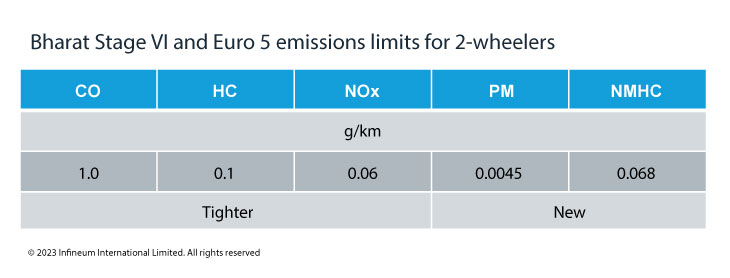Specification updates
ACEA HD Sequences released
22 January 2025
15 March 2023
Revisions to the JASO T903 motorcycle lubricant specification expected to be finalised soon

The latest emissions regulations and fuel efficiency demands are driving change in the motorcycle industry and, to safeguard modern hardware, JASO's motorcycle oil specification is undergoing an overhaul. In an interview with Insight, Pradheep Veerapan, Infineum Small Engines Product Manager, reveals the challenges that the new specification aims to tackle and shares what it takes to keep up with the changes.
The JASO T903 standard, developed by the Society of Automotive Engineers of Japan (JSAE), sets quality limits for key four-stroke motorcycle lubricant parameters. Over the years, the standard has been regularly updated to keep pace with industry needs. The last update in 2016, amongst other things introduced new clutch friction plate materials and new reference oils to discriminate oil performance more clearly and the limits for friction severity were set back to the 2006 level to prevent MB oils from being able to achieve MA performance. As the industry continues to change, JSAE is expected to introduce the next JASO T903 revision in spring 2023 to ensure motorcycle oils continue to offer sufficient protection to the latest hardware.
Tougher emission standards for motorcycles in India, Europe, and Japan are the driving force behind the major changes in the industry. The limits for carbon monoxide (CO), hydrocarbons (HC), and oxides of nitrogen (NOx) emissions have been tightened, and new limits for particulate matter and non-methane hydrocarbons (NMHC) emissions have been introduced.

The road to meeting these performance requirements is not easy, especially as they must be met under the world motorcycle test driving cycle (WMTC), which simulates real-world driving conditions. As OEMs strive to meet these stringent emissions limits they are adopting three-way catalyst systems. However, the presence of phosphorus in motorcycle oils poses a potential risk of poisoning these systems, raising concerns in the industry.
The new regulations also include longer durability requirements. In 2023, India will phase in OBD2 onboard diagnostic systems, followed by Japan and Europe in 2024, which will introduce catalytic converter deterioration monitoring for the first time.
Since engine modifications to control NOx production can negatively impact fuel economy there is an increased need to improve motorcycle efficiency, making it important to further improve the boundary and hydrodynamic friction performance of lubricants. This need for improved fuel economy may increase the use of friction modifiers and drive a transition towards lower viscosity grade lubricants. Until recently, the lowest viscosity grade in use had been SAE 10W-30. However, there is now a growing interest in even lower viscosity grades, such as SAE 5W-30 and 0W-30.
It's highly anticipated that the upcoming JASO revision will bring changes to API categories, similar to previous updates. The latest API Service Categories for gasoline passenger car lubricants is expected to be included in the new specification, leading to its widespread adoption in motorcycles. As a result, the lower quality categories may become obsolete.
To ensure the three-way catalyst remains compliant but also to help optimise design and efficiency, it is highly likely that the maximum limit of the phosphorus level will be reduced in the revised JASO specification. Other changes may include, tightening NOACK limits.
The future-proof design built into our motorcycle oil products means most are ready to meet the new JASO motorcycle oil specification. Our portfolio has been re-evaluated and we have conducted extensive power, acceleration, and durability testing to ensure that our motorcycle engine oil additive technology, formulated with lower viscosity and lower phosphorus, performs exceptionally well. Our extensive field trials have further demonstrated the efficacy of our products.
Thanks to all this preparation, we are ready to assist customers in meeting the latest requirements of the new JASO T903 specification.
Sign up to receive monthly updates via email